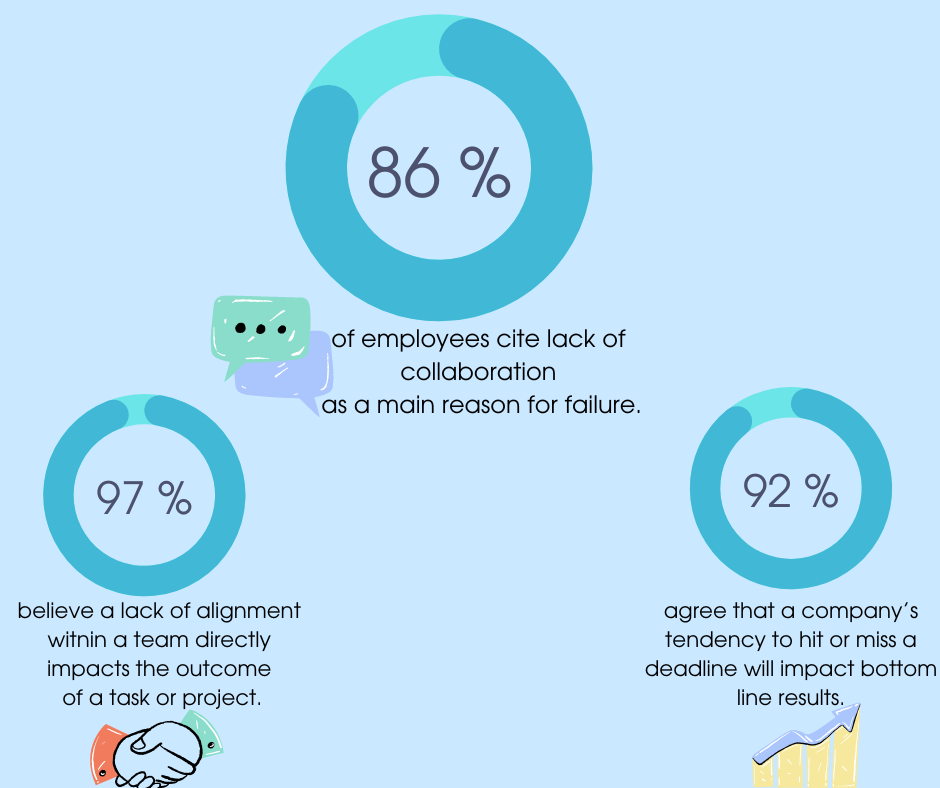Poor Collaboration Consequences: 86% of Employees Blame Lack of Collaboration for Failures
In the name of history, we are recreating the results of the research conducted by Fierce, Inc. as then described on the Salesforce blog.
The initial research took place in 2011 and was conducted in the form of a customer survey of more than 1,400 corporate executives, employees, and educators. The sectors included in the research were financial, healthcare, technology, and manufacturing.
Main study breakdowns:
- 86% of respondents named lack of collaboration or ineffective communication as the main reasons for workplace failures.
- 92% of respondents said that meeting deadlines is essential for a company’s success, which is why mistakes should be taken care of.
- 97% of individuals agreed that a lack of alignment in actions is the primary factor contributing to project failure or task.

How do employees want collaboration to work?
- 70% strongly believe that lack of sincerity and candor affects the optimal performance of the company.
- 90% think that decision-makers should ask for the opinions of others involved in the process of working on the task or project. At the same time, 40% responded that leaders do not do this at all.
- Almost 100% choose to work in a place where people can freely name and discuss problems openly and effectively. However, only 50% responded that their organization is succeeding in this.
This survey shows full picture that communication problems are something all niches and industries are struggling with.
How to create a strong collaborative culture
1. Encourage people to share ideas
Make sure employees know their suggestions will be taken seriously by peers and superiors.
2. Build brainstorming into each project
Solicit feedback from group members at key decision points to ensure vital information is never overlooked.
3. Log important communications
Document project plans and key discussions to eliminate the “he said/she said” nature of spontaneous conversations.
4. Limit group sizes
Keeps groups large enough to avoid tunnel vision but small enough to preserve a close-knit dynamic where everyone knows each other.
5. Resist the urge to direct
If you are the boss, allow employees to contribute and tackle problems on their own before immediately jumping into such a solution.